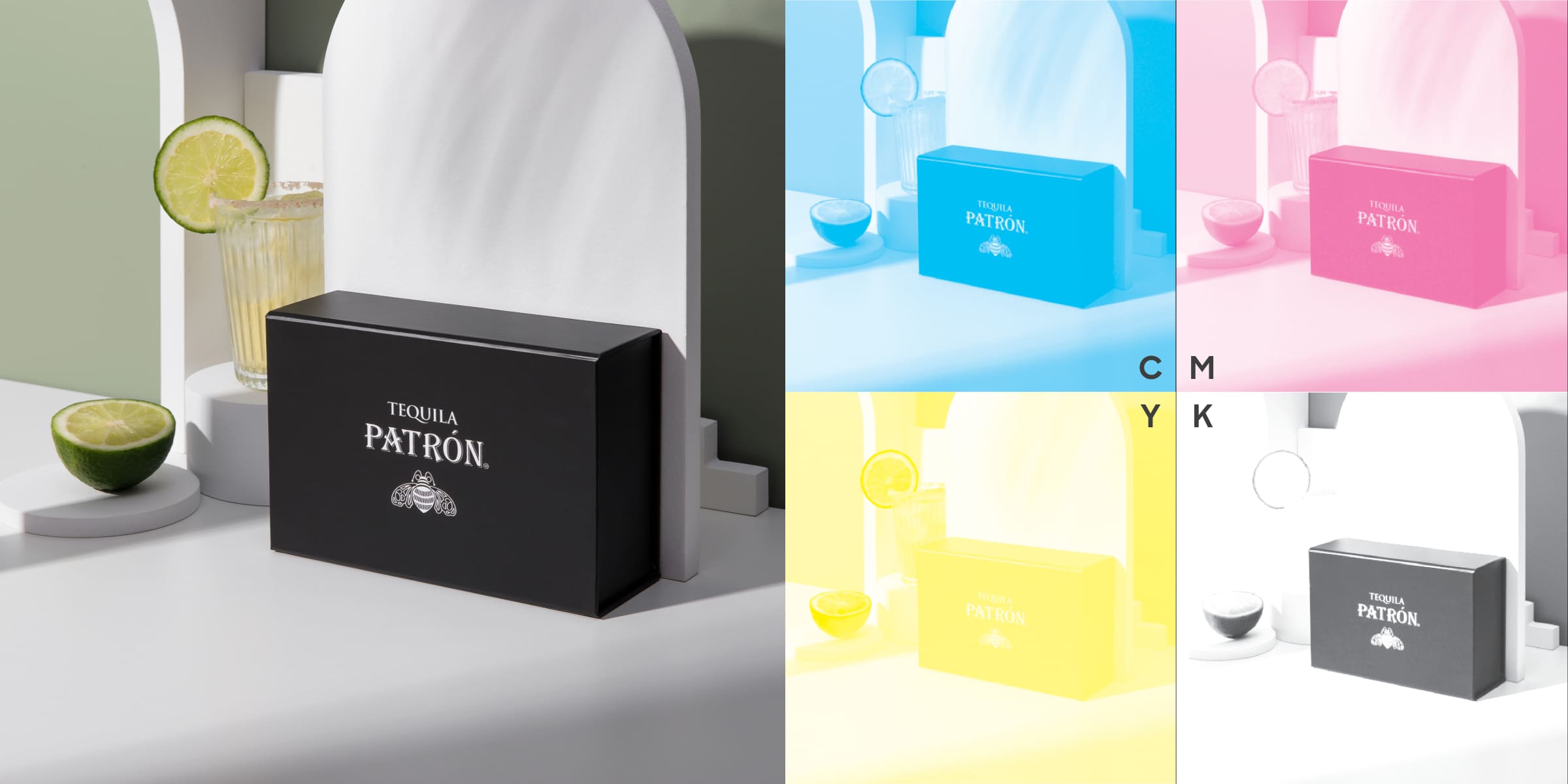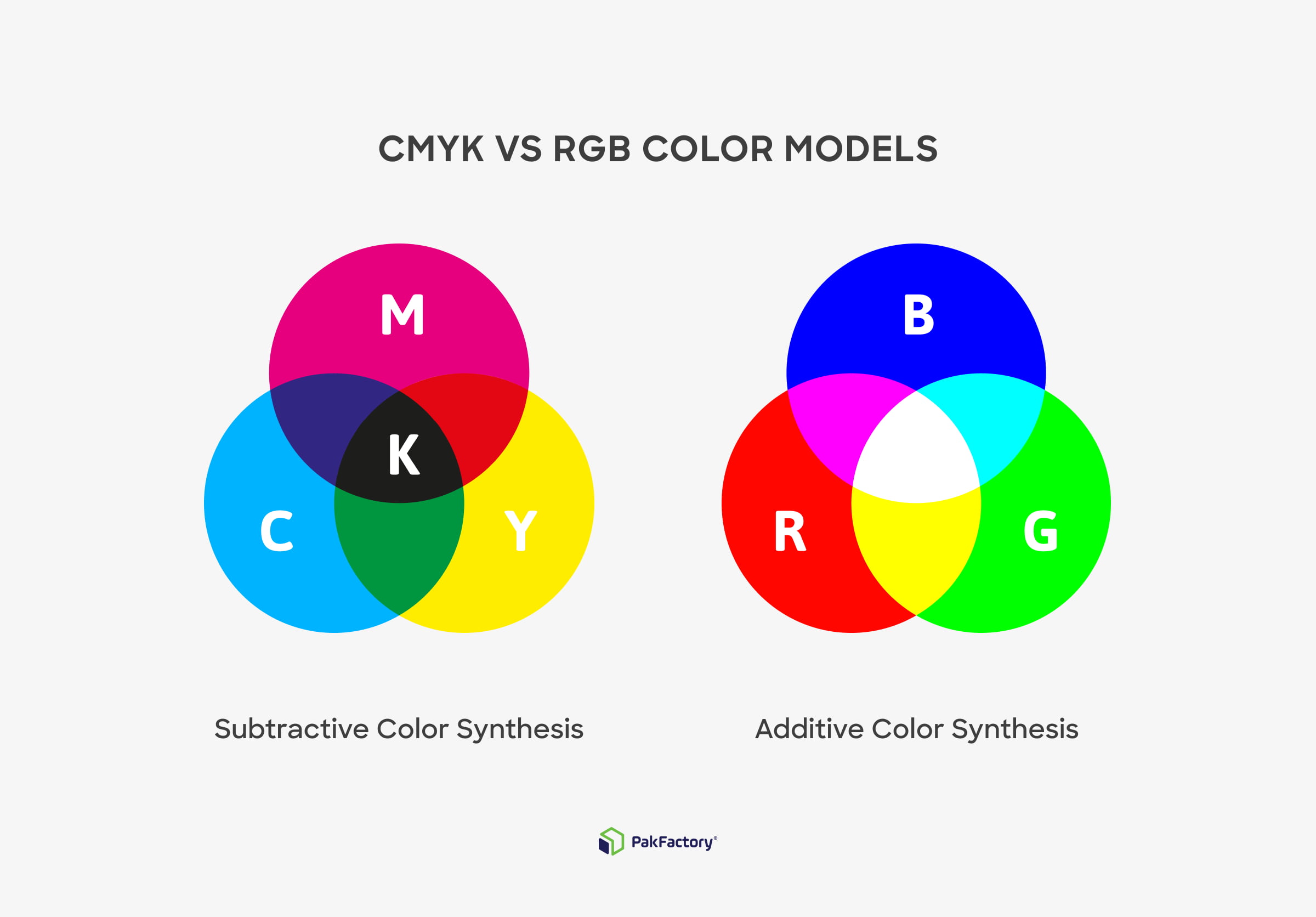Table of Contents
If you’ve ever had a project designed or printed before on a commercial scale, you’ve probably heard of CMYK. Alone, these four letters don’t give much of a hint as to what they are and what they’re for, but knowing this is important for any print job you do.
For starters, you should know that CMYK is an acronym.

Source: PakFactory
What is it, and what does CMYK stand for?
CMYK is a color model that stands for Cyan, Magenta, Yellow, and Key (Black). It refers to the four primary colors of pigment used in four-color process printing and is the industry standard for all print-related mediums like brochures, documents, and packaging.

Source: PakFactory
The CMYK color model also refers to the entire color printing process, where every image is separated into the four primary color pigments of cyan, magenta, yellow and key (black) to create a combination of colors with a fraction of the ink.
Now, you may wonder why we use ‘K’ or Key when referring to black. Well, there are two main reasons for this. The first reason is that Johann Gutenberg, the printing press inventor, was also the first person to use key when referring to black, which has since carried on to the modern day.
The second reason is that ‘B’ denotes Blue in the RGB color system. RGB is different from CMYK and stands for Red, Green, and Blue and is a commonly used digital color space for screens.
CMYK vs RGB vs Pantone
With the introduction of another color system, it is essential to discuss their differences so you know which color system to use for which purpose. We’ve already mentioned RGB, but to get a complete picture, we will also include Pantone (PMS) in the comparison, as this is another standard color system you may encounter.
Let’s look at all the main features each color system brings to the table and if you’d like to learn more about the other color systems, please click their respective links below:
| CMYK Color System | RGB Color System | Pantone Matching System (PMS) | |
|---|---|---|---|
| Method | Blends four colors to create new colors | Arranges color pixels to create new colors | Uses pre-mixed solid, single-color ink |
| Mediums | Printing | Digital screens | Printing |
| When to Use | Designs that consist of multiple colors | Any digital designs | When perfect color matching is required |
| Color Consistency | Difficult to match between print jobs | Colors will display differently between screens | Identical colors from print to print, but difficult between different mediums |

CMYK Color System
- A subtractive color spectrum that uses ink to remove colors from a lighter background, like white paper. CMYK uses reflecting light to achieve the colors you see on paper.
- CMYK blends four colors (cyan, magenta, yellow, black) to create new colors, which is also known as the four-color process
- CMYK color space is commonly used in printed materials like documents, photographs, brochures and designs that consist of multiple colors.
- Printing with CMYK may result in slight color variations between each print, but it is much more affordable and quick than Pantone.
- An additive color spectrum that directly uses light to display colors instead of using the reflection of light.
- RGB arranges red, green and blue to create new colors on the screen
- RGB color space is commonly used in digital mediums like televisions, computer monitors, phones and tablets.
- If you intend to print, RGB should be converted to CMYK before doing so or done in the CMYK color system instead – more on this later.
- Pantone has over 1000 shades of colors, allowing for a more extensive and exact range of unique color tones.
- PMS uses pre-mixed solid colors for printing to create identical colors from print to print, as known as spot colors
- Like CMYK, Pantone can be used for printed materials. It is best for branding or when exact color matching is required.
- Pantone offers more precision of color than CMYK, but the colors may differ between mediums depending on how inks are absorbed. For example, the Pantone color will look different between printing on paper and printing on plastic.
- Pantone is also much more expensive and time-consuming than CMYK. With PMS, you are essentially paying for each new color you use.
The Purpose of CMYK over RGB
Recall earlier that we recommended converting projects from RGB to CMYK before printing. The purpose of the CMYK color model derives from the inefficient use of the RGB color model in printing. This is because CMYK is explicitly intended for ink, while RGB is for a digital display.
With RGB, inks of three colors (red, green, blue) would need to be mixed to get white, which is usually the most dominant color for a document containing text, for example. Paper is already a white variation, so using the RGB system is ineffective for the sheer amount of ink printed on white surfaces.
That’s why the CMY (Cyan, Magenta, Yellow) color system became the printing solution! Cyan and magenta yield blue, magenta and yellow yield red, while yellow and cyan yield green. All three colors combined will then make key, or black. This immensely reduces the ink needed to print a wide range of designs and colors.
As shown in the figure below, CMYK subtracts colors instead of adding colors like RGB, which makes this color system utilize way less ink!

Read more about color matching here!
Converting RGB to CMYK
So now that you know why the CMYK color system is better than RGB for printing, how do you convert an RGB project to CMYK?
While most colors can translate well between the color systems, subtle color shifts should be expected. What looks like blue in RGB might look like purple in the CMYK color space. This is why we highly recommend designing any work intended for print using CMYK beforehand.
However, if your project is already in RGB, then the simple steps below will help!
- Create a replica of your original image and open both copy and original in Adobe Photoshop. This helps give you a point of reference when converting your image.
- Select the copy you want to convert and click Image > Mode > CMYK Color from the main toolbar at the top of the screen.
- You are done! Refer back to your original RGB image and adjust colors as required.
We always recommend viewing a printed proof of your project before sending it to the printing press to avoid costly errors and ensure accuracy.
CMYK For Your Next Packaging Project
With RGB now exclusively for digital screens and Pantone an expensive alternative, the CMYK color system has become a popular choice for packaging as it consumes less ink overall while providing an accurate color output.
For that reason, custom packaging is efficient with offset printing, flexo printing, and digital printing using the CMYK color system and creates consistent brand colors for exceptional branding opportunities.
Still trying to figure out if CMYK is suitable for your packaging project?
Contact us today and find the perfect color-matching system for your custom packaging project!





